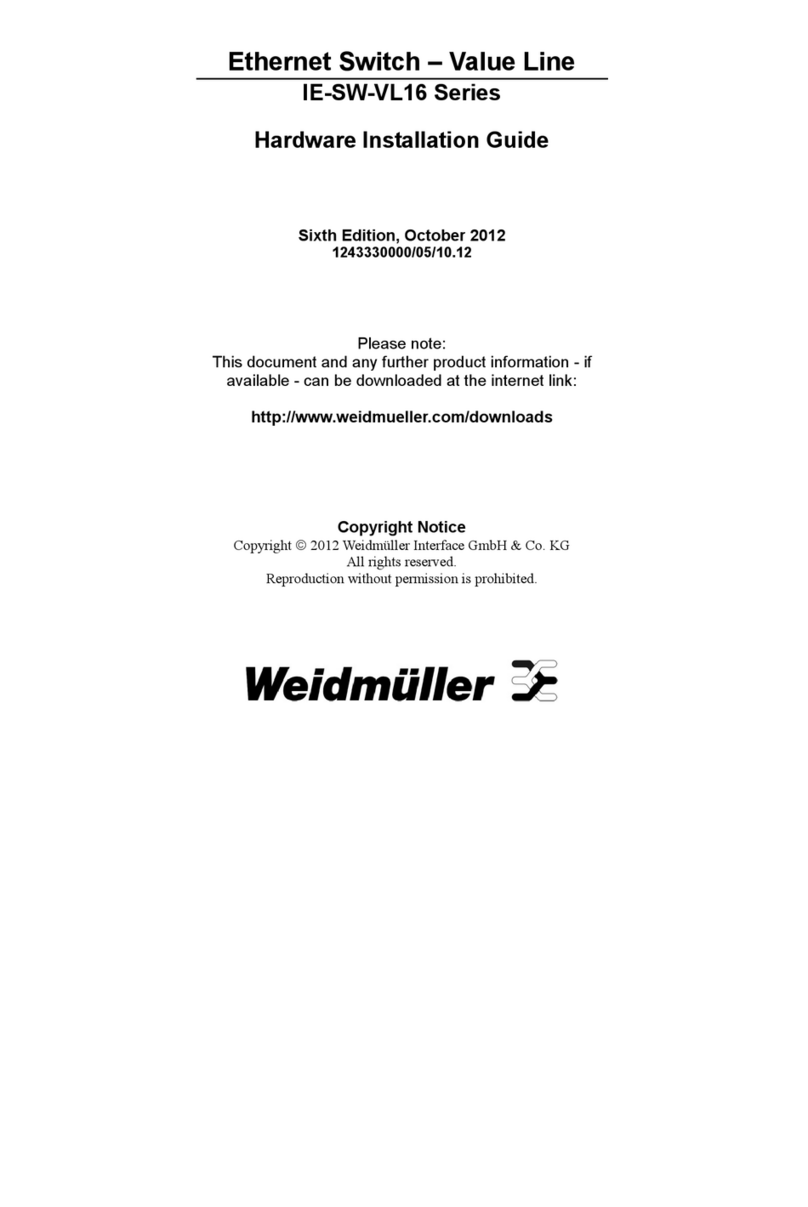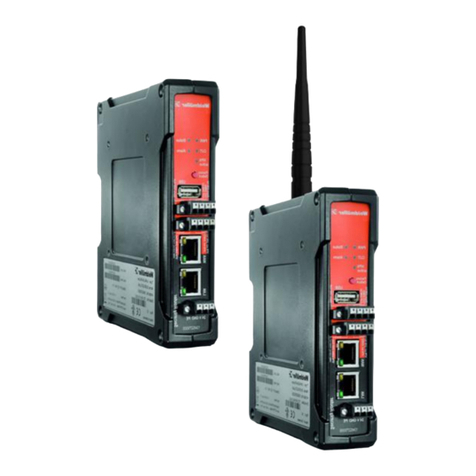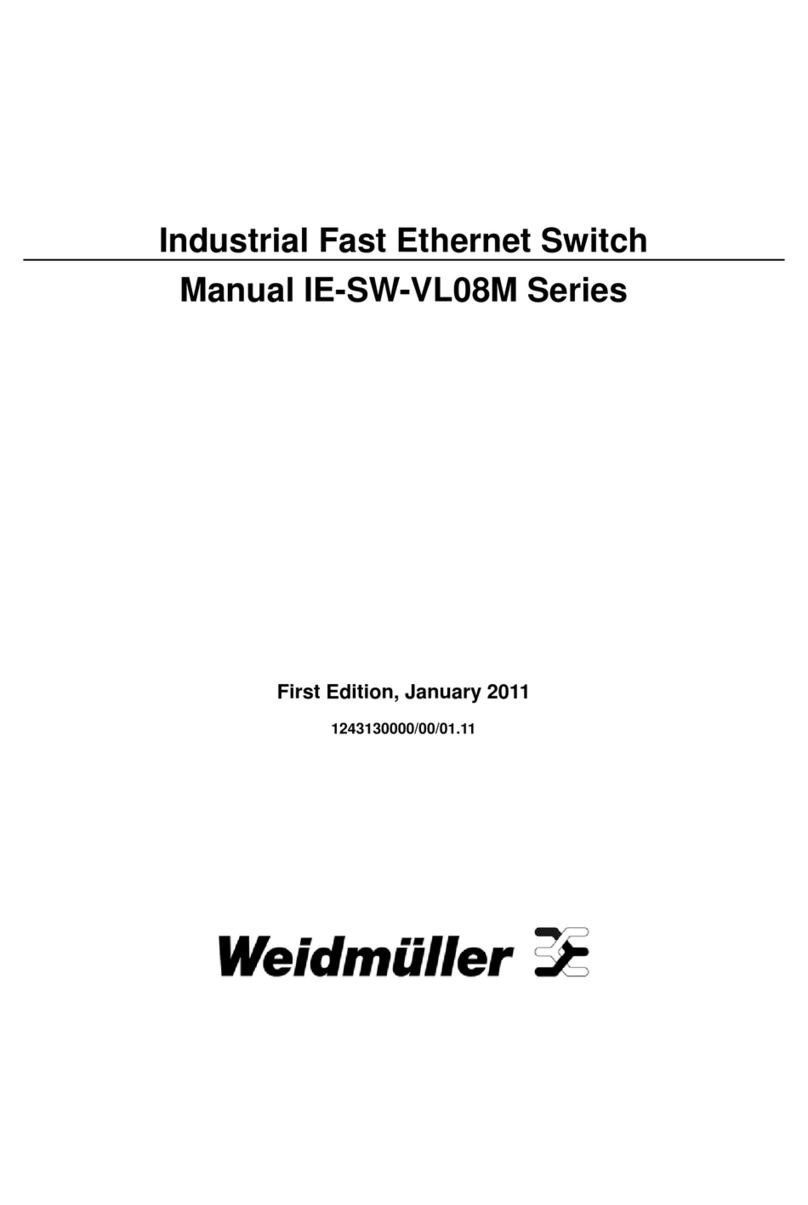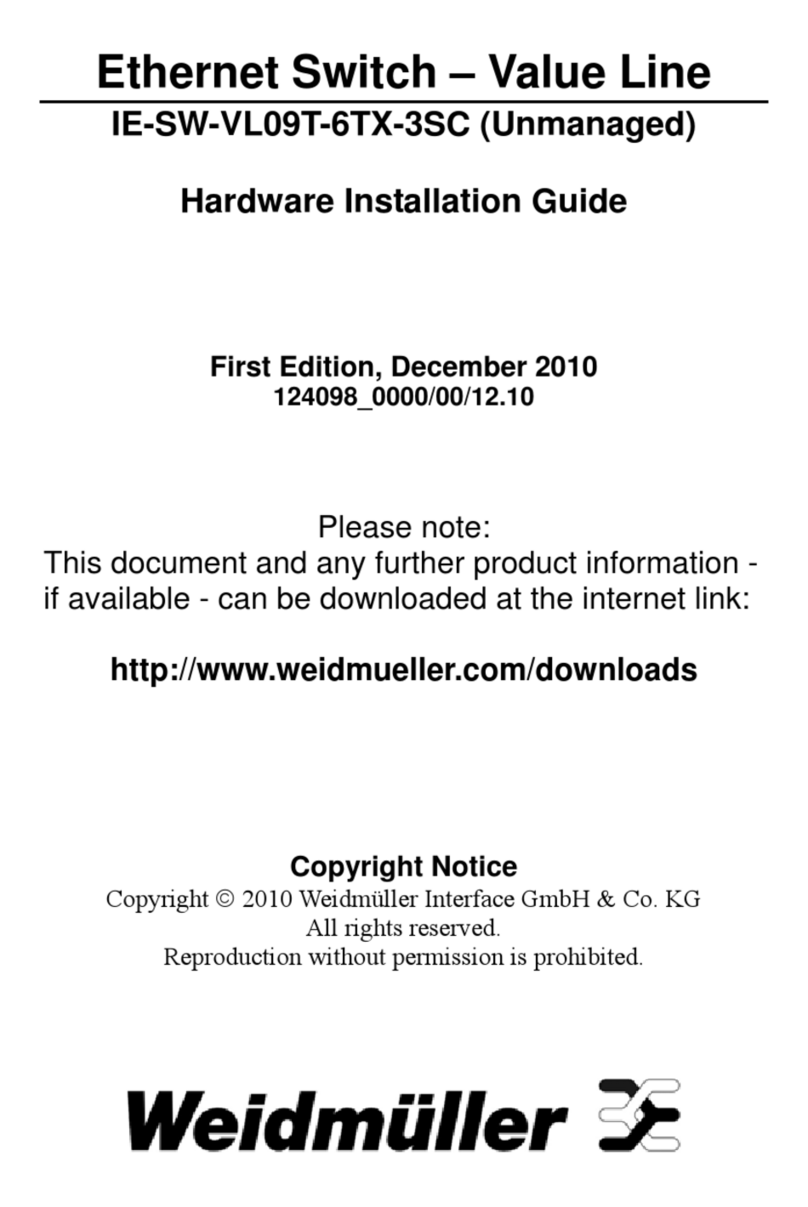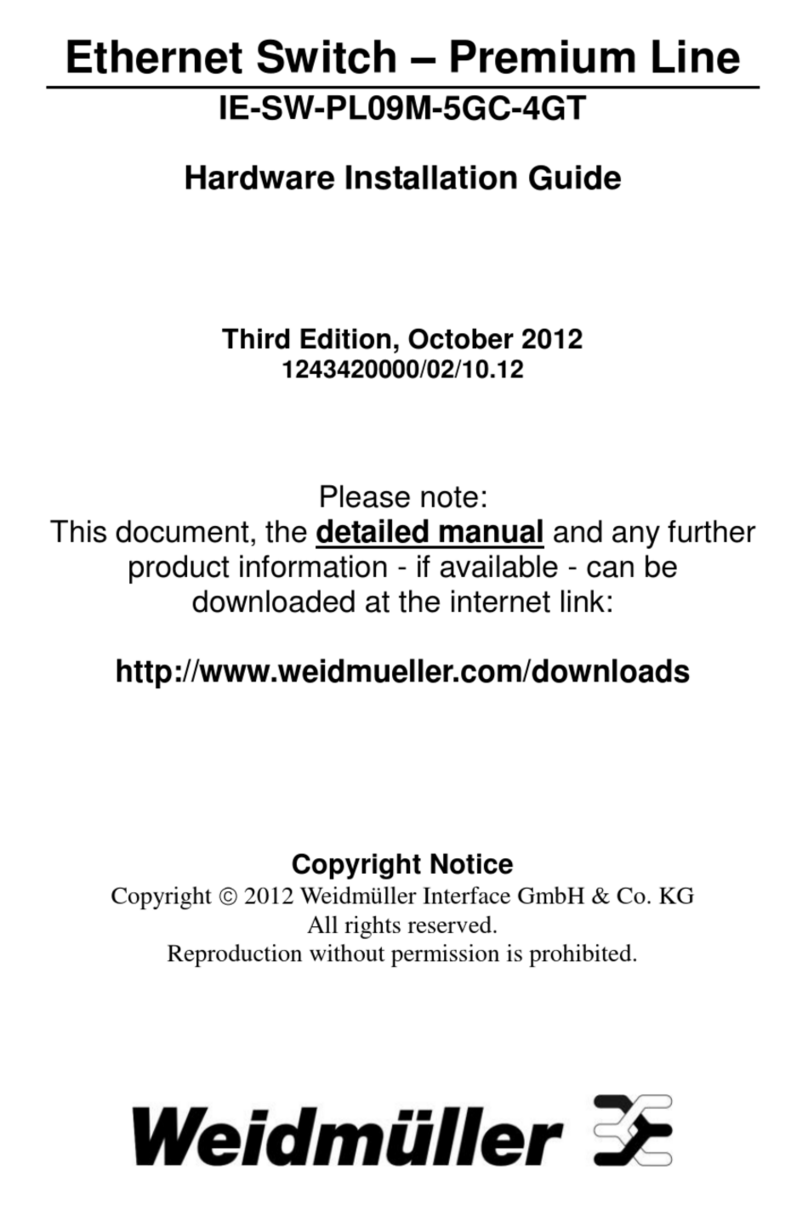
Wiring the Redundant Power Inputs
IE-SW-PL18M-Switches have two sets of power inputs - power input 1 and
power input 2 –located on the 6-pin terminal block connector on the top
panel of the device. See sketch below how to connect.
STEP 1: Insert the
negative/positive DC wires into
the V-/V+ terminals, respectively.
STEP 2: To keep the DC wires
from pulling loose, use a small
flat-blade screwdriver to tighten
the wire-clamp screws on the front
of the terminal block connector.
STEP 3: Insert the plastic terminal
block connector prongs into the
terminal block receptor, which is
located on the switch’s top panel.
Wiring the Digital Inputs
IE-SW-PL18M-Switches have two sets of digital inputs, DI 1 and DI 2. Each
DI consists of two contacts of the 6-pin terminal block connector on Switch´s
top panel, which are used for Switch´s two DC inputs. The top and front
views of one of the terminal block connectors are shown here.
STEP 1: Insert the negative
(ground)/positive DI wires into the ┴
/I1 terminals, respectively.
STEP 2: To keep the DI wires from
pulling loose, use a small flat-blade
screwdriver to tighten the wire-clamp
screws on the front of the terminal
block connector.
STEP 3: Insert the plastic terminal
block connector prongs into the
terminal block receptor, which is
located on the IE-SW-PL18M´s top
panel.
Communication Connections
All models of IE-SW-PL18M-Switches have one RJ45 console port (RS-232
interface), between 14 and 16 10/100BaseTX Ethernet ports. Some models
also have 2 100BaseFX (SC/ST-type connector) fiber ports.
In this section, we present two types of diagrams - Pinout Diagrams and
Cable Wiring Diagrams - to convey information about the ports and the
cables used to connect IE-SW-PL18M Series to other devices:
Pinouts—The meaning of the “Pinouts” diagrams is straightforward. The
diagrams simply display the type of signal passing through each of the port’s
pins.






